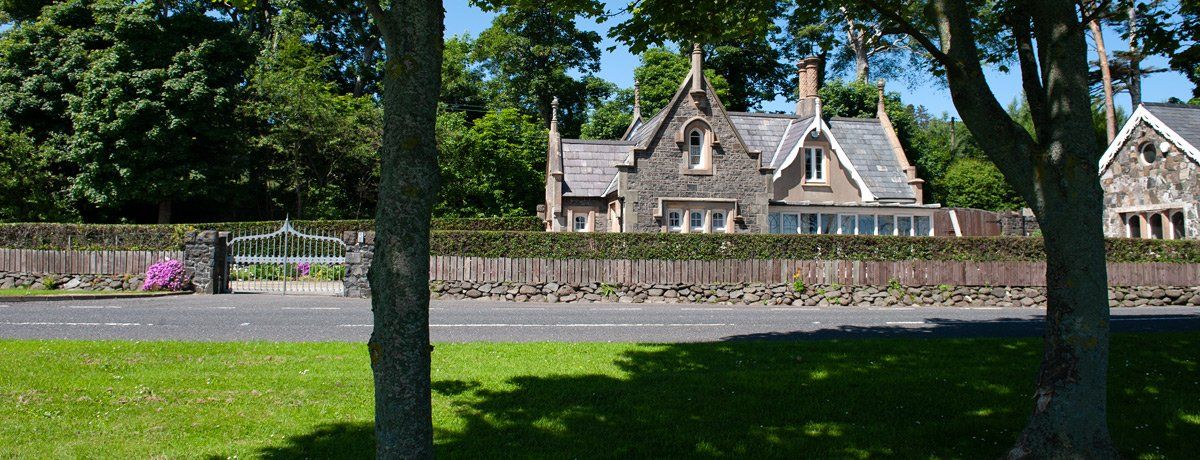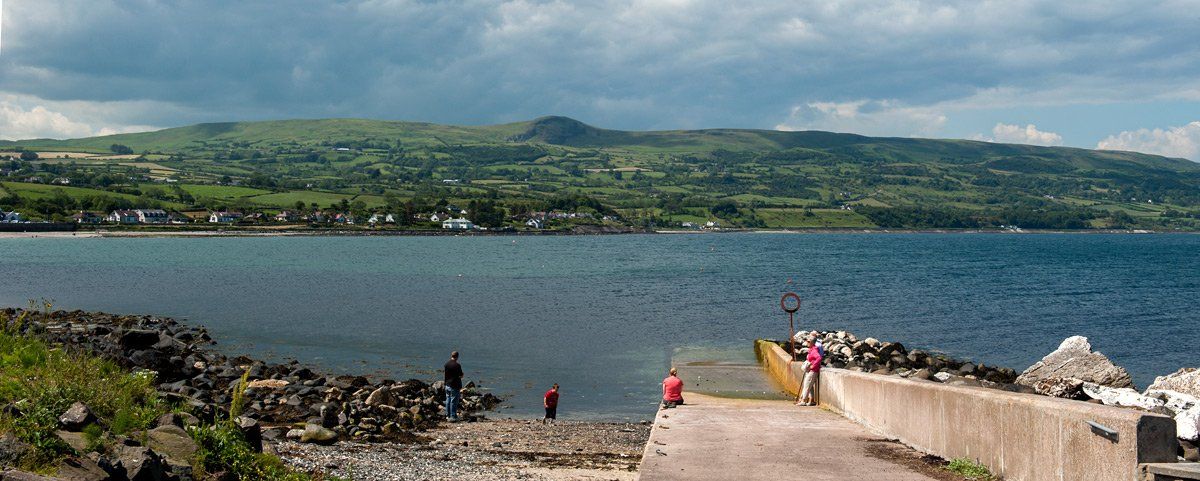Ballygally History
The small village is home to Ballygally Castle, a class Scottish baronial styled house built in 1625 by James Shaw who arrived here in 1606 from Greenock during the Plantation of Ulster. In 1621 a grant of land was made to him by the Earl of Antrim, one hundred and twenty acres at Carnfunnock and eighty acres at Corkermain and Ballyruther, the land at Carnfunnock is part of the well used Carnfunnock Country Park. This castle was a fortified residence and would have originally had four walls around it much like we see in the bawns, the musket loopholes indicate the seriousness of the times. It was used as a refuge on several occasions, during the 1642 rebellion it withstood several attempts to capture it by an Irish garrison from Glenarm.
The castle remained in the Shaw family into the 1800s, then passed through a couple of families until it was acquired in the 1950s by Cyril Lord, a well-known carpet manufacturer. He refurbished the castle and opened it up as a hotel, in 1966 it was bought by the Hastings group who developed the hotel to what we see today. The castle is said to be home to several ghosts, one of these being Lady Isabella Shaw who frequents the old part of the castle had fallen to her death in mysterious circumstances from a tower window. There is a special turret room kept in her honour and aptly named ‘The Ghost Room’.
The area has been occupied since man first crossed from Scotland, this is evident in the finds of flint workings during excavations in 1957 and 1989. Like most other early settlements along the coast, the location provided a ready source of fish, freshwater plus materials needed for the early manufacturing of arrows and spears. The 1989 excavation found similarities with finds on the Isle of Arran indicating the possible route of migration to Ireland after the last ice age. Many believe these early settlers or ‘hunters and gathers’ as they were known, walked across a retreating ice sheet to get her.
If you look out to sea from Ballygally you will see two islands and some skerries, they are known as The Maidens. The two islands had lighthouses built on them in 1829, today there is just one automated light. The islands are a favourite place for grey seals to colonise and also has a thriving sea bird colony. The Maidens have claimed dozens of shipwreck over the centuries including the 4,000 ton SS Housatonic owned by Anglo-American Oil Co. of London. In 1908 she ran aground on Russell Rock, one of the distress rockets fell back on the ship and started a fire, an explosion occurred which claimed two lives and caused the ship to sink.
Another intriguing wreck was a 250-ton cutter reported as sunk by the London Chronicle in 1791, it was armed with 16 guns and engaged in smuggling luxury goods, the cargo consisted of 1400 chests of tea, 100 chests of silk and 60 ankers of spirits (1 anker is around 40 litres). The ship had come from Gothenburg. This was during the heyday of smuggling around the north coast. Thirty-one of the crew of forty-seven were saved. The report stated that two months before this the ship had fought off an HM Customs ship in the Bay of Benluce. Another famous local person was the radical innovative teacher John Manson who was born nearby at Cairncastle in 1762 and was one of Ireland's leading grammar writer's of the 18th century.





